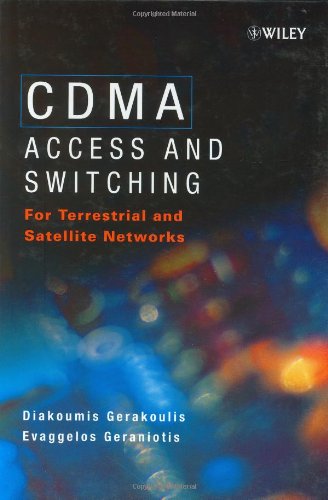

Most ebook files are in PDF format, so you can easily read them using various software such as Foxit Reader or directly on the Google Chrome browser.
Some ebook files are released by publishers in other formats such as .awz, .mobi, .epub, .fb2, etc. You may need to install specific software to read these formats on mobile/PC, such as Calibre.
Please read the tutorial at this link: https://ebookbell.com/faq
We offer FREE conversion to the popular formats you request; however, this may take some time. Therefore, right after payment, please email us, and we will try to provide the service as quickly as possible.
For some exceptional file formats or broken links (if any), please refrain from opening any disputes. Instead, email us first, and we will try to assist within a maximum of 6 hours.
EbookBell Team

0.0
0 reviews
ISBN 10: 0471491845
ISBN 13: 9780471491842
Author: Diakoumis Gerakoulis, Evaggelos Geraniotis
Chapter 1: Principles of Communication in CDMA Systems
1.1 Direct-Sequence Spread Spectrum (DS-SS)
1.2 Frequency-Hopping Spread Spectrum (FH-SS)
1.3 Principles of Code-Division Multiple Access (CDMA)
1.4 Receiver Structure and Signal Processing
Chapter 2: Signal Generation and Synchronization
2.1 Pseudo-Noise (PN) Sequences
2.2 Gold Codes and Walsh Codes
2.3 Acquisition and Tracking in CDMA Receivers
Chapter 3: Channels, Link Budgets, and Interference
3.1 Terrestrial Radio Propagation
3.2 Satellite Channels
3.3 Interference and Capacity in CDMA
3.4 Power Control
Chapter 4: Terrestrial CDMA Networks
4.1 CDMA Cellular System Architecture (IS-95, cdmaOne)
4.2 Mobile Station and Base Station Subsystems
4.3 Mobile Switching Center (MSC) and Network Elements
4.4 The Evolution to 3G (CDMA2000)
Chapter 5: Satellite CDMA Networks
5.1 Introduction to Satellite Communications
5.2 Low Earth Orbit (LEO) and Medium Earth Orbit (MEO) Constellations
5.3 CDMA in Global Satellite Systems
5.4 Satellite Gateway and User Terminal
Chapter 6: Access and Mobility Management
6.1 Call Processing and Registration
6.2 Handoffs in CDMA Systems (Soft Handoffs)
6.3 Roaming and Inter-System Handovers
6.4 Paging and Location Update
Chapter 7: Switching and Call Routing
7.1 Role of the Mobile Switching Center (MSC)
7.2 Signaling and Network Protocols
7.3 Routing Calls in Terrestrial and Satellite Networks
7.4 Interworking with PSTN and IP Networks
Chapter 8: Data Services in CDMA
8.1 Packet Data Architecture
8.2 High Data Rate (HDR) Technology
8.3 IP-based Services
Chapter 9: The Future of CDMA
9.1 Evolution to 4G and Beyond
9.2 LTE and CDMA Interworking
9.3 Future Applications
cdma direct memory access
what does multiple access mean in csma/cd
cdma (code division multiple access)
gsm and cdma explained
icam access management
Tags: Diakoumis Gerakoulis, Evaggelos Geraniotis, CDMA, Switching